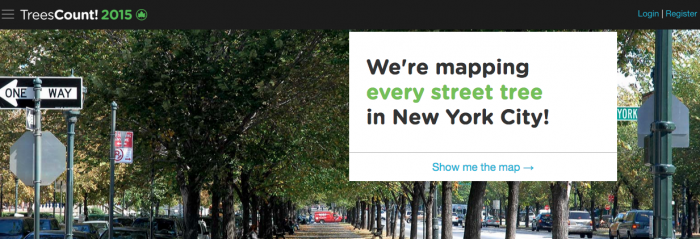The initiative targeted six neighborhoods where planting trees could reduce asthma rates and help reduce heat island effects: Hunts Point and Morrisania (location of Joyce Kilmer Park) in the Bronx, East New York in Brooklyn, East Harlem in Manhattan, Stapleton in Staten Island, and The Rockaways in Queens.
Three-quarters of the trees planted as part of the initiative were added to city property like existing parks, along with 220,000 new street trees in all five boroughs.

Tree CountVolunteers provide the field force for City-wide inventory.
Overall, between 1995 and 2015, the number of street trees in New York’s five boroughs jumped more than 15 percent – a remarkable record considering the city’s density, normal tree mortality and available planting space.
Among other big-number tree campaigns, few other than New York have met their goals.
Funding
- City of New York
- New York Restoration Project
- Various foundations
Implementation
- To get new trees into other public and private space—around hospitals, libraries, churches, public housing developments and in private yards—the city teamed up with the New York Restoration Project, brainchild of actress and singer Bette Midler.
- Together they raised $30 million toward the tree plantings.
- Under the auspices of TreesCount NYC, an initiative of New York City Parks, these street tree inventories have been conducted every ten years since 1995. NYC Parks maintains an active citizen stewardship program and provides a combination of tools including TreeKIT and mobile data collection devices.
Partners
- City of New York
- New York Restoration Project
Lessons Learned
- High profile champions energize and sustain campaigns. They’re vital to fundraising.
- Citizens can be trained to inventory and monitor street trees, if they have access to the right training and tools.
- Volunteer programs require on-going institutional leadership, even between major initiatives.
- Careful mapping and priority-setting before the first tree is planted helps focus benefits on neighborhoods that need them most.

